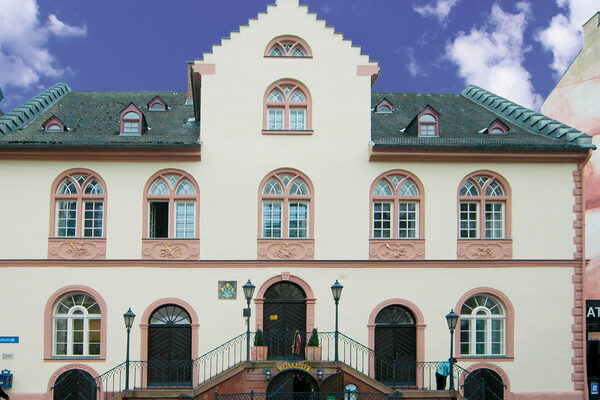History Wiesbaden-Mitte
The - initially much smaller - medieval "wisabada" was built on the ruins of the Roman "Aquae Mattiacorum".
Capital of the Duchy of Nassau
Until the 19th century, the town remained largely within the boundaries of the Roman settlement. The first upswing came with the relocation of the Nassau residence to Biebrich and the government to Wiesbaden in 1744. When Wiesbaden became the capital of the Duchy of Nassau in 1806, the city's development accelerated rapidly - the population increased tenfold within 60 years.
Milestones
The general development plan by Christian Zais from 1818 was decisive for the structural development, creating the basis for the historic pentagon that still characterizes the core of the state capital of Wiesbaden today. At this time, the city fortifications with walls and gates had been largely demolished. The first expansion of the city to the south began with the construction of Luisenstraße in 1823, and Rheinstraße was completed in 1831. In 1858, the first house was built south of Rheinstraße, marking the beginning of intensive building activity. By 1900, the town within today's borough was almost completely built. In the north-west, the first buildings were erected around 1860, and by 1885 the development extended as far as Kellerstraße. The municipal hospital was built between Platter Strasse, Kastellstrasse and Schwalbacher Strasse between 1877 and 1879 and consisted of several individual pavilions for the various specialist departments. It was in operation for over 100 years before being replaced in 1982 by the new Dr. Horst Schmidt Clinics on the outskirts of the city.
Historic buildings and monumental structures
Hardly any of the medieval buildings remain today. The oldest building in the town center is the old town hall, which was completed in 1610 and rebuilt in the 19th century. The oldest residential buildings date from 1728 and 1735 and the market fountain on Schlossplatz was built in 1753. Monumental buildings from the 19th century are particularly characteristic of the townscape, including the town palace (1837-1840), the market church (1852-1862), the new town hall (1884-1887) and the Bonifatiuskirche (1845-1849). The Kaiser-Friedrich-Bad, now known as the Kaiser-Friedrich-Therme, opened in 1913 on the site of the former Adler-Badhaus, whose thermal baths were already used by the Romans.
Wiesbaden as a congress city
The opening of the Rhein-Main-Hallen in 1957 was an important step in Wiesbaden's development. Built on the site of the former Taunus railway station, they became a center for exhibitions, conferences and congresses. In 2018, the RheinMain CongressCenter (RMCC) was inaugurated on this site and has been setting new standards as Wiesbaden's largest event venue ever since. By the way: the Congress of Internal Medicine has been held in Wiesbaden since 1882.
Historical highlight
The oldest residential buildings in Wiesbaden: the Cetto House in Wagemannstraße from 1728 and the house at Spiegelgasse 11 from 1735.
